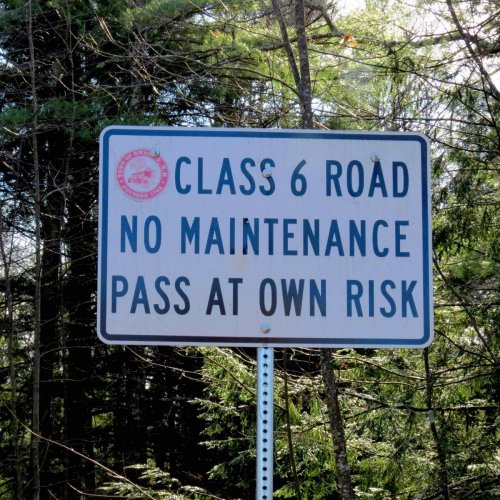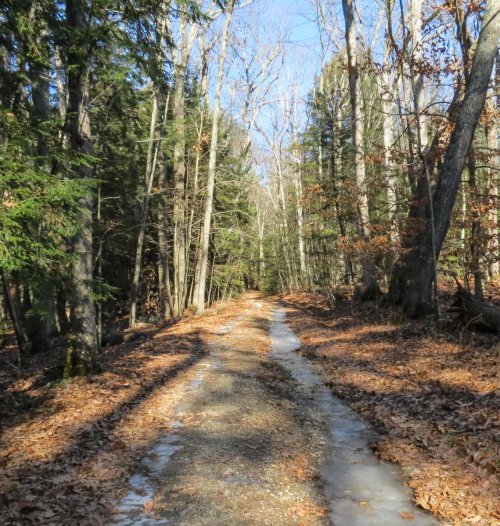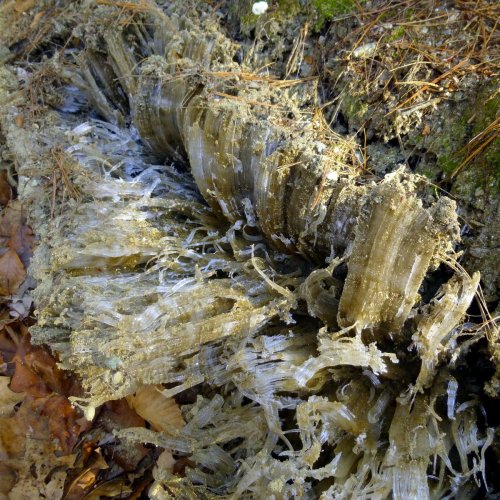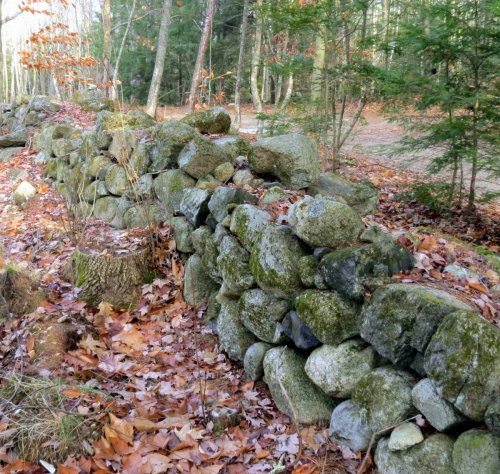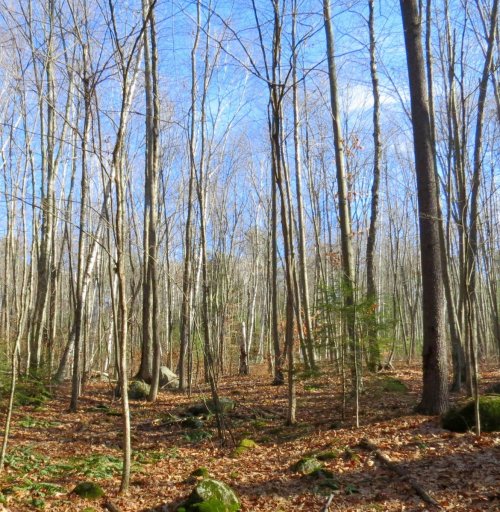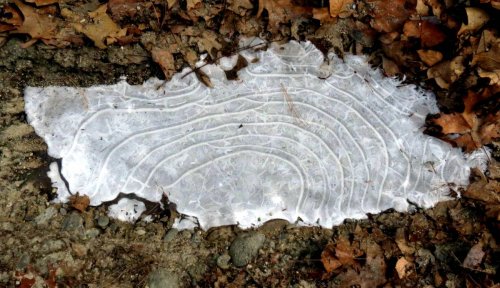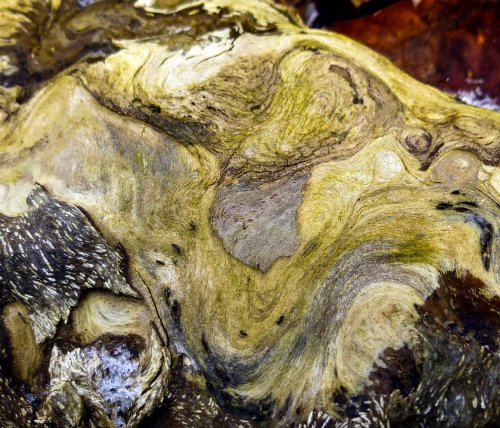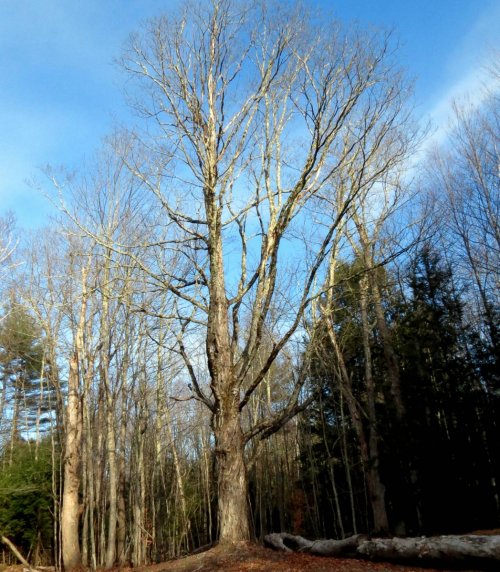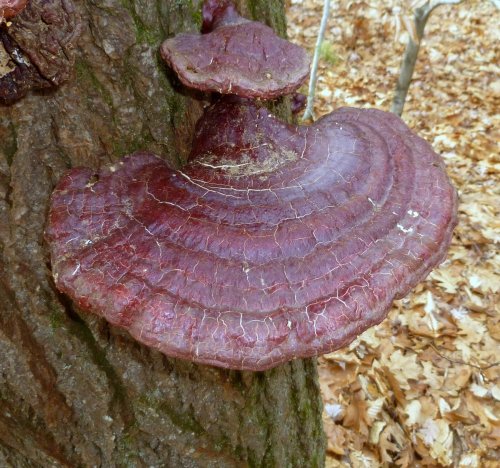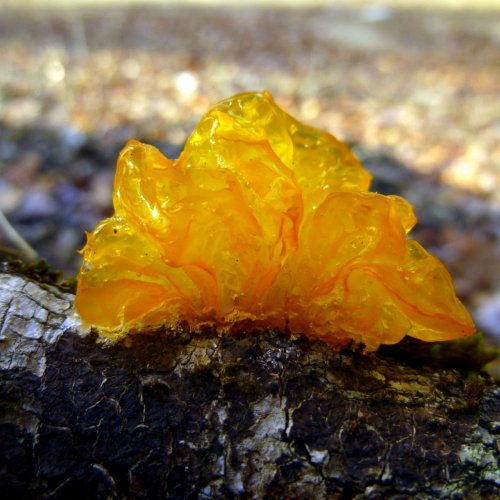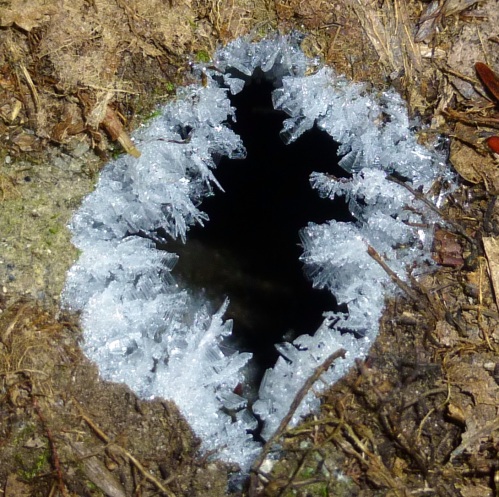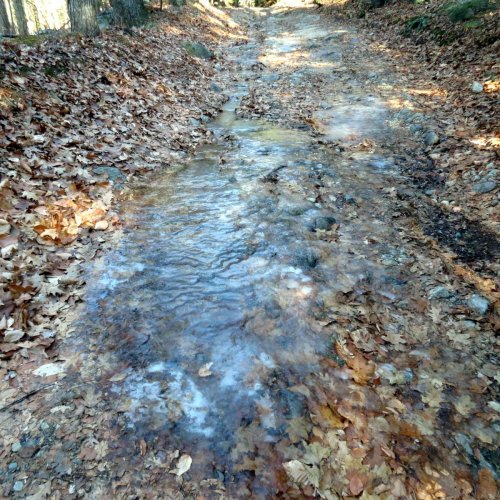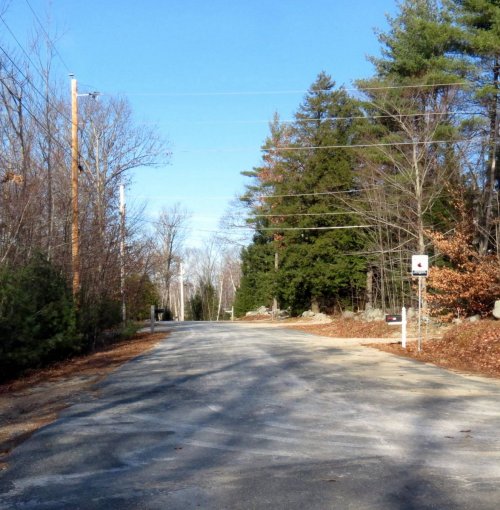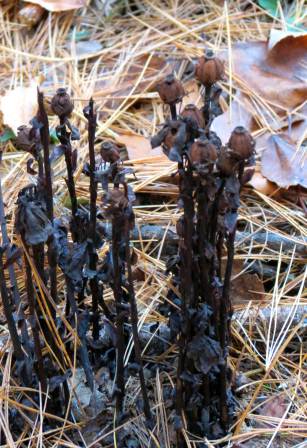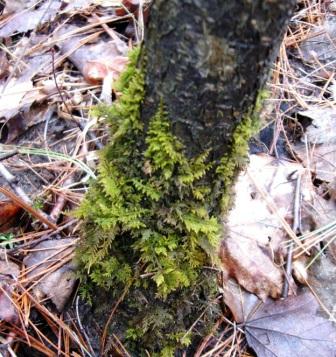Swanzey Lake is a place that I visit quite frequently because of the easy accessibility of the surrounding forest. Like most lakes in this area there is a road that goes completely around it. Off this road, near a huge boulder covered with rock tripe lichens, is another road that I’ve wondered about for years. I was able to finally hike it recently.
This is a class 6 road which means, unless you know someone who has traveled it, you’re better off walking it than driving it-at least for the first time. I know of another class 6 road with two old timber and plank bridges out and nowhere to comfortably turn around. I had no idea where this one might lead, but I was determined to find out.
It wasn’t long before I was regretting leaving the Yak Tracks behind, but as it turned out the icy spots were relatively easy to avoid. I’m not in a Yak Track frame of mind yet, but I’d better get in one soon. Some of these old roads just end in the forest and others connect with networks of other old, forgotten roads. There’s really no telling where they lead, and that’s part of the fun. Fun that is, as long as you carefully note any detours onto other roads that you might have to take. In some cases it’s possible to get seriously lost out here if you aren’t paying attention. I haven’t heard of any lost hunters yet but it usually happens every year at about this time.
I saw the longest ice needles I’ve ever seen along this road. The ones in the photo were at least 6 inches long and had frozen together to form thick ice ribbons. Since they are extruded from the ground by hydrostatic pressure, they are almost always covered with sand or soil.
Instead of curling like they usually do these ice needles grew straight up and brought stones along for the ride. Several of these ice pillars were capped by tiny pebbles.
Stone walls mean this land was cleared once, and somebody lived out here. In 1822 the New Hampshire State Board of Agriculture suggested what farmers should do with all of the stones they found in their fields: “Almost all farms have stone enough to make a wall for every necessary division and enclosure. Labor used in this way answers a double purpose; it secures the fields from the ravages of stock, and improves them by removing rocks which are not only useless, but inconvenient and injurious in their natural situation. A farmer ought to consider it his proper business, as he has means and opportunity, to secure his lands by stone walls.” All he needed was a horse, a stone boat, and a strong back. And a couple of sons would have come in handy, too. By 1871 there were an estimated 252,539 miles of stone walls in New England and New York, enough to circle the earth 10 times at the equator. Today it is almost impossible to walk through these woods without finding them.
Somebody is still cutting trees here. None of these are very old and most are hard wood.
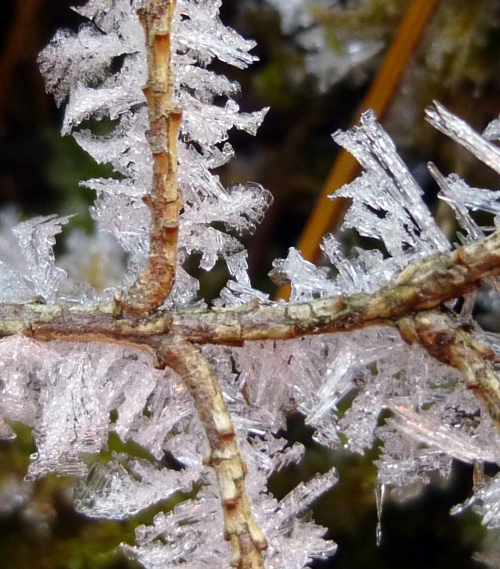 Almost every inch of this hemlock twig was covered in ice.
Almost every inch of this hemlock twig was covered in ice.
It must be wind that makes waves on mud puddles-even small ones-this one couldn’t have been a foot long.
Puddles weren’t the only things displaying wave patterns. This fallen birch was as big around as a truck tire and might have made some interesting lumber. Spalting is a caused by fungi growing on dead trees and the wood is prized by woodworkers due to the unique colors and patterns that can form in the log. I was wishing that I could cut a slab or two just to see what the grain pattern would look like. This could be a very valuable log.
Next to the birch log stood a nice old sugar maple (Acer saccharum.) I don’t know why sugar maples are so often found near roads, but I’m guessing they were planted there so the sap buckets would be easier to get to. A paper titled Relationships between Soil Salinity, Sap-Sugar Concentration, and Health of Declining Roadside Sugar Maples by Graham T Herrick says that scientists all over the country are seeing dying sugar maples along roadsides. Road salt residue in soil inhibits plant water uptake and tips of branches in the crown start dying off. Before long the entire tree is dying. The strangest part of the study shows that the amount of sugar in the sap actually increases as the tree dies. The tree in the photo has probably never seen salt used on this old road, so it has had a chance to live a long, healthy life.
I found several hemlock varnished bracket fungi (Ganoderma tsugae) growing on an old eastern hemlock stump (Tsuga canadensis.) It has a white outer edge and underside when it is young and looks very different than those in the photo. They are annuals that grow new from the mycelium each spring, and these examples were at least a year old, I think. This mushroom is said to be among the most valuable medicinal fungi. The Chinese have used it in their medicine for over 2000 years.
It was cold enough to freeze this orange jelly fungus but the sun must have thawed it out.
This hole in the ground was about as big as a quarter-just right for a snake. Judging by the hoar frost around its rim there was plenty of moisture of coming out of it. At this scale it looks like a cave.
I won’t be leaving those Yak Tracks behind again until March, I guess. Snowmobile and four wheel drive clubs do a great job of keeping these old roads open, but there’s nothing they can do about the ice.
Suburbia. Not exactly the wilderness I was hoping for and not what I was expecting to find at the end of a class 6 road, so back I went the way I came. At least now I don’t have to wonder where this road leads and I know where I can go for a short walk that has plenty of interesting things to see.
An old road always looks richer and more beautiful than a new road because old roads have memories. ~ Mehmet Murat ildan
Thanks for coming by.
